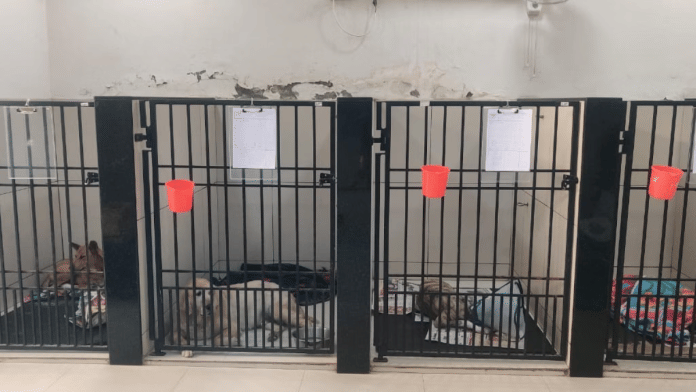New Delhi: In a first for India, the central government has issued guidelines for blood transfusion in animals, setting up a standard process for any kind of blood donation and transfusion for animals, especially pet dogs and cats. From defining blood types in eight different domestic species to mandating blood typing and donor welfare, and even establishing blood banks for animals, the guidelines are the first attempt to formalise a practice that has been ongoing in veterinary healthcare for decades.
“This was very necessary for a lot of reasons,” said Dr Kunal Sharma, chief veterinary Surgeon at Max Pets Hospital. “I remember back in 2018, we had asked if we could operate an animal blood bank, but back then there was no ministry to even handle these concerns.”
He added that there are many cases of accidents or trauma or diseases in animals where there is blood loss, and that veterinarians now finally have “legally-sanctioned ways of providing them with this blood”.
According to the SoP released Monday by the Union Ministry of Fisheries, Animal Husbandry and Dairying, India has more than 537 million livestock and 125 million companion animals, making it a country with one of the largest domestic animal populations.
There are also over 70 veterinary colleges in India, and veterinary science and medical practices are fast evolving, but the country had still not been able to standardise a procedure like blood transfusion.
“It is not just during accidents, animals require blood for a lot of different reasons—cancer, viral blood infections, kidney failures, anemia, are commonly seen in pets,” explained Dr Vipul Chaturvedi, a veterinarian at Vetic clinic in Noida. “But there are a lot of issues. We often don’t know the many blood types of dogs and cats. Even if we do, it’s difficult to find donors, so sometimes we get the blood of other pets from the same owners,” he added.
Now, the SoP stipulates the weight and health of animals necessary for them to be a blood donor. The guidelines also say the animal must be clinically healthy, vaccinated, and temperamentally sound as well as between a certain age bracket to be eligible to donate blood.
Most importantly, however, the donation of blood now requires written, informed consent from the owners of the animals, and it should be voluntary and not compensated with money.
“When blood transfers used to take place before, there were a number of unethical practices followed by some veterinarians and clinics,” said Sharma. “Sometimes, dogs were even picked up from the street, or blood was stolen, to fulfill the needs of patients. Now, these practices will finally be regulated.”
Also Read: From scans & surgery to skincare, all under one roof, India’s pet clinics are getting modern upgrade
SoPs for other species
The guidelines state norms for all species and not just dogs. For livestock like cattle and horses, the amount of blood that can be withdrawn is different, compared to dogs and cats, and so is the recommended coagulant to be used afterwards.
The newly released SoP also describes how animals should be observed for signs of an adverse reaction to the new blood after the tranfusion. “Common signs of acute transfusion reactions include sweating and violent muscle movements in farm animals, and fever and vomiting in dogs and cats,” it says.
One of the most important things described in the ministry’s guidelines is the number of recorded blood types for domestic animals. Cattle have 11, while sheep and horses have eight, dogs have nine, and cats have four. The document also lists out the blood types and explains how to perform blood-typing and blood matching for animals.
“In large hospitals like ours, we have been doing these tests for a while. But I am happy now that the government has standardised it, a lot of smaller clinics too will start adopting these practices,” said Sharma.
In addition to practices for transfusion, the guidelines also state that veterinary hospitals and colleges should have specialised courses on transfusion medicine to train vet staff in the country. States are also guided to establish cryopreservation and blood bank units to preserve donated animal blood for emergencies.
“It is definitely a good step, but it does remain to be seen how the blood banks will function and whether willing donations will come forward,” said Chaturvedi. “Even during emergencies and accidents, it’s not always easy to convince pet-owners to donate their pets’ blood.”
(Edited by Ajeet Tiwari)
Also Read: India’s Equine Lab in Hisar Earns Global Recognition






